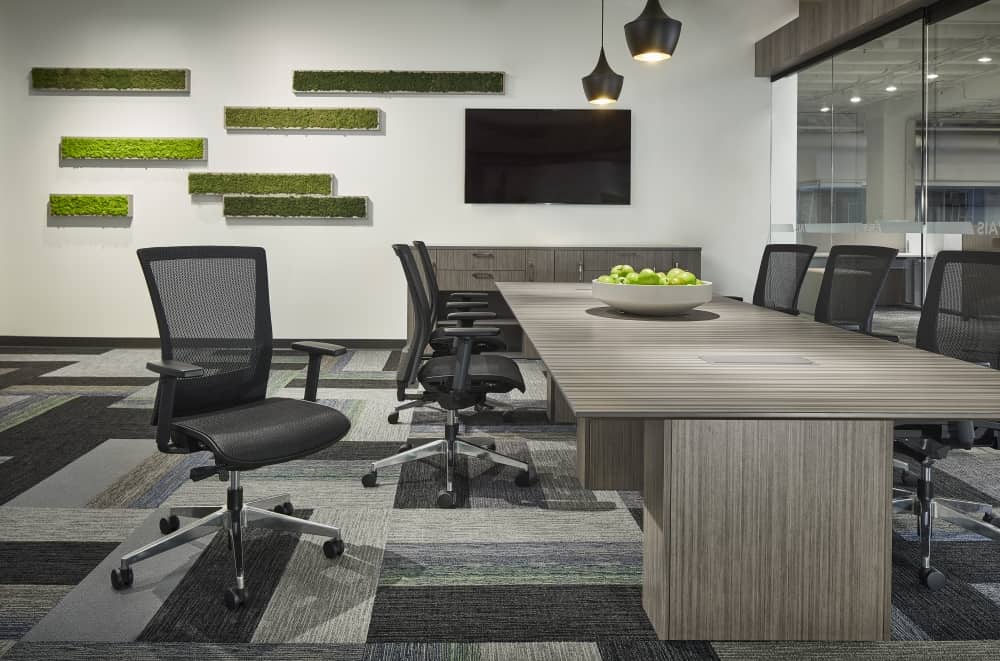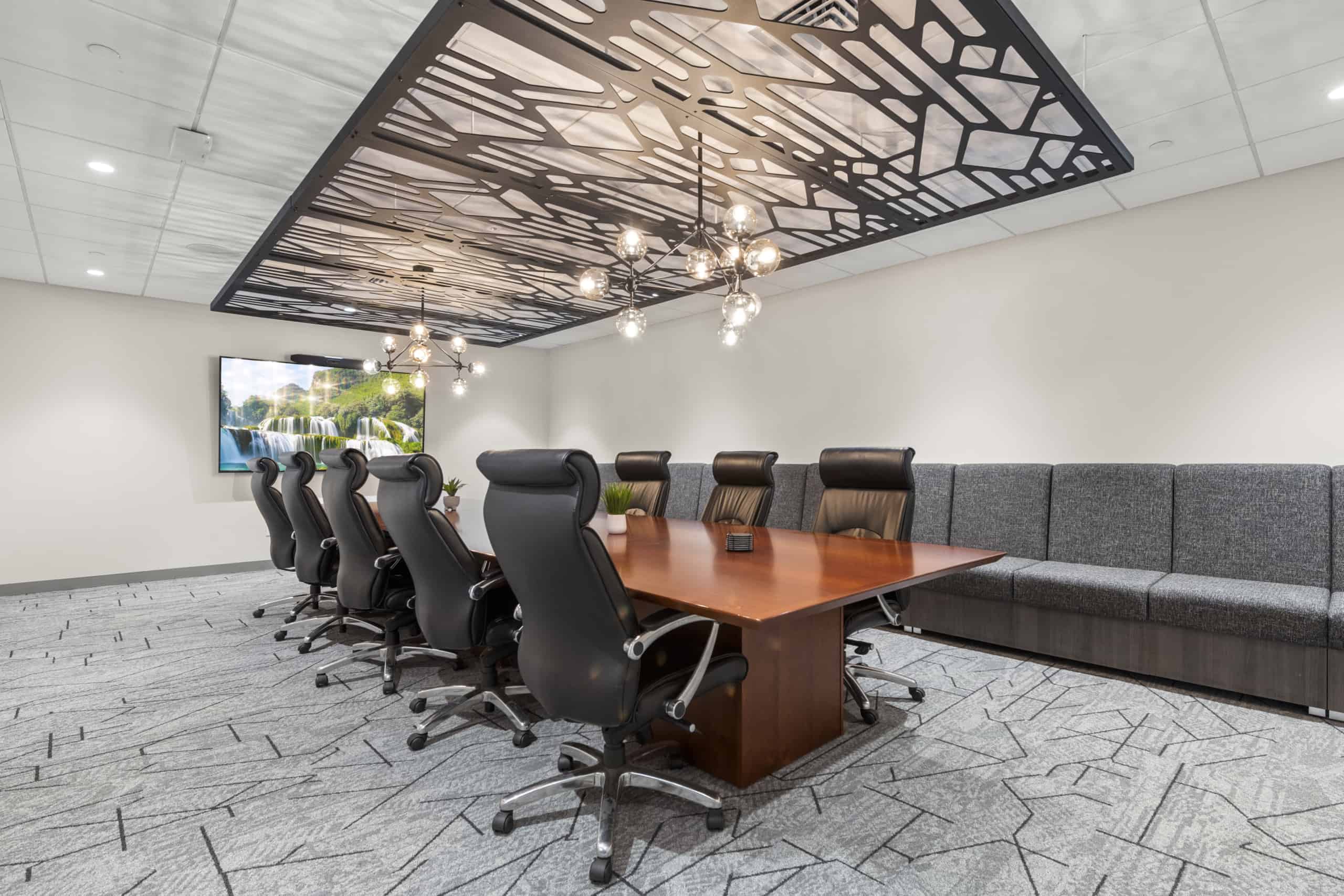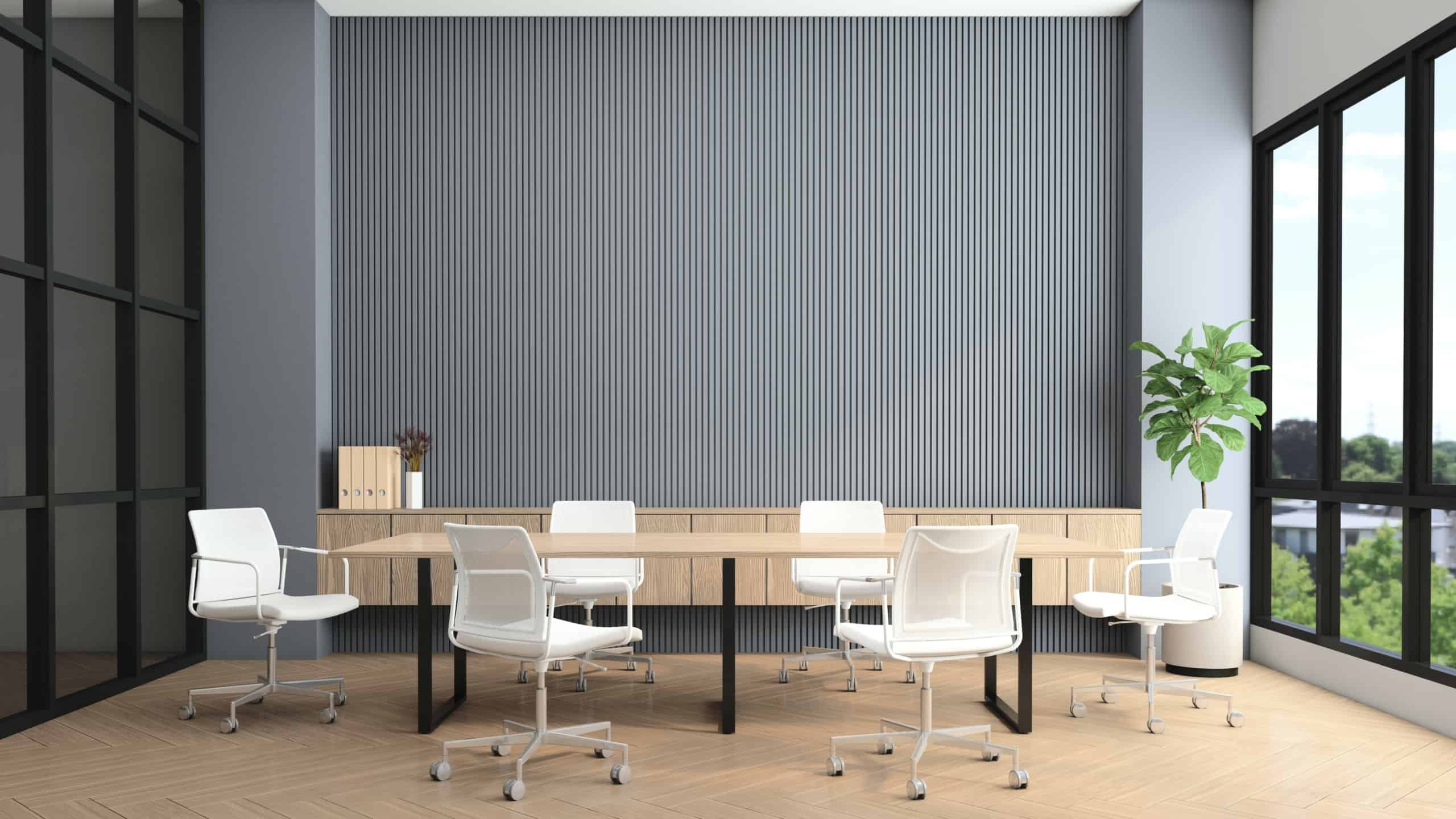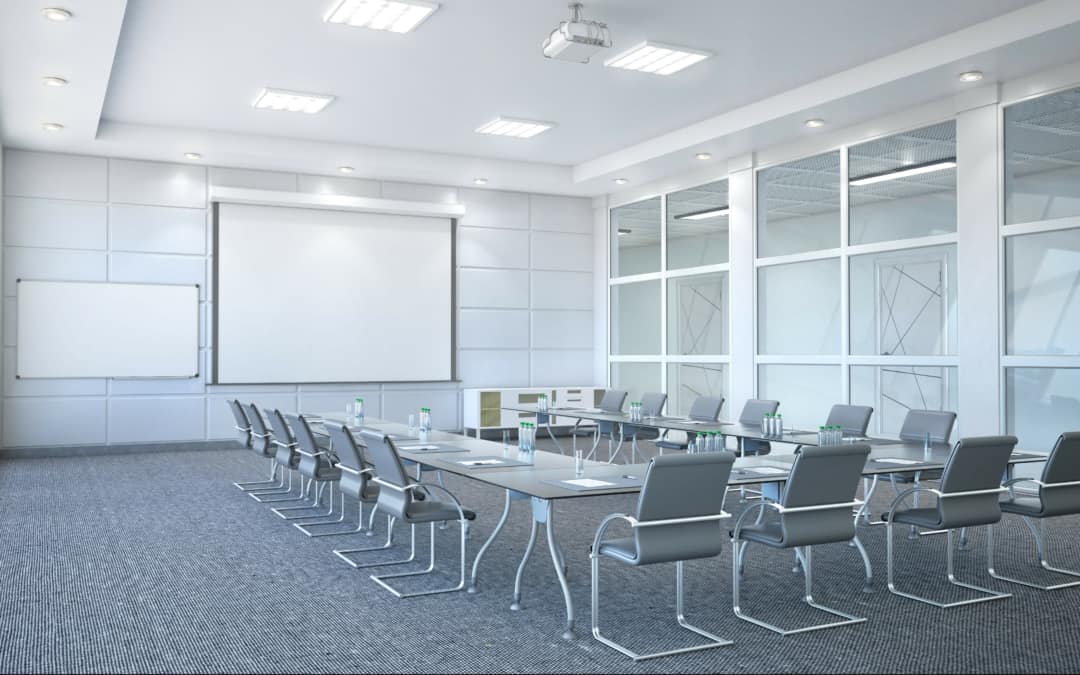Designing a conference room involves careful planning and consideration of various factors in order to create a functional and visually appealing space. Here are some considerations to guide you in the design of a conference room:

Determine the Purpose:
Understand the primary purpose of the conference room. Will it be used for presentations, collaborative meetings, video conferences, or a combination of activities? Establishing the room’s purpose will help you determine the required features and layout.
Assess Space and Capacity:
Measure the available space and consider the number of people the conference room needs to accommodate comfortably. This quantitative data will determine the room’s size, seating capacity, and furniture layout.
Plan the Layout:
Decide on the room’s layout based on the activities it will host. Consider options such as boardroom style, theater style, or a more flexible layout with movable furniture. Ensure that there is enough space for circulation and that seating allows for clear sightlines to screens or speakers.
Consider Audio-Visual Needs:
Determine the audio-visual equipment requirements, such as projectors, screens, speakers, and microphones. Plan the placement of these devices to ensure optimal visibility and audio coverage for all participants. Consider integrating smart technologies for seamless control and connectivity.
Lighting and Acoustics:
Choose appropriate lighting fixtures to provide adequate illumination without creating glare or shadows on screens or presentation materials. Incorporate adjustable blinds or curtains to control natural light. Address acoustics by using sound-absorbing materials, such as acoustic panels, carpets, or drapes, to minimize echoes and external noise.
Furniture Selection:
Select comfortable and ergonomic furniture, including chairs, tables, and podiums. Ensure that chairs provide proper support for long meetings. Consider modular or flexible furniture options that can be reconfigured easily based on a meeting’s requirements.

Connectivity and Power:
Install sufficient power outlets and data ports throughout the room, conveniently located to accommodate participants’ devices and connectivity needs. Consider providing charging stations, multimedia connections (HDMI, VGA), and wireless connectivity options for seamless presentations and collaboration.
Environmental Control:
Install a reliable HVAC system to maintain a comfortable temperature within the room. Consider individual temperature controls or zoned systems to accommodate varying preferences. Adequate ventilation is important for air quality and participant comfort, especially after COVID-19 .
Aesthetics and Branding:
Choose a color scheme and decor that align with the organization’s branding and create a professional ambiance. Consider incorporating elements like company logos, artwork, or branding colors in a subtle and tasteful manner.
Accessibility and Inclusivity:
Ensure that the conference room is accessible to individuals with disabilities. Install ramps, wide doorways, and accessible seating. Include Braille signage, hearing-assistance systems, and other accessibility features as needed.
Storage and Organization:
Plan for storage space to keep equipment, supplies, and presentation materials neatly organized. Consider storage cabinets, shelves, or integrated solutions that maintain a clutter-free environment.
Test and Optimize:
Once the conference room has been designed and set up, test all equipment, audio-visual systems, and connectivity to ensure that they function properly. Make adjustments as needed and gather feedback from users to further improve the room’s design and functionality.

Remember to comply with building codes, fire-safety regulations, and any other applicable standards in designing the conference room.
With careful attention to these considerations, you can design a conference room that meets the needs of your organization and provides an environment that is conducive to productive meetings and collaborations.


